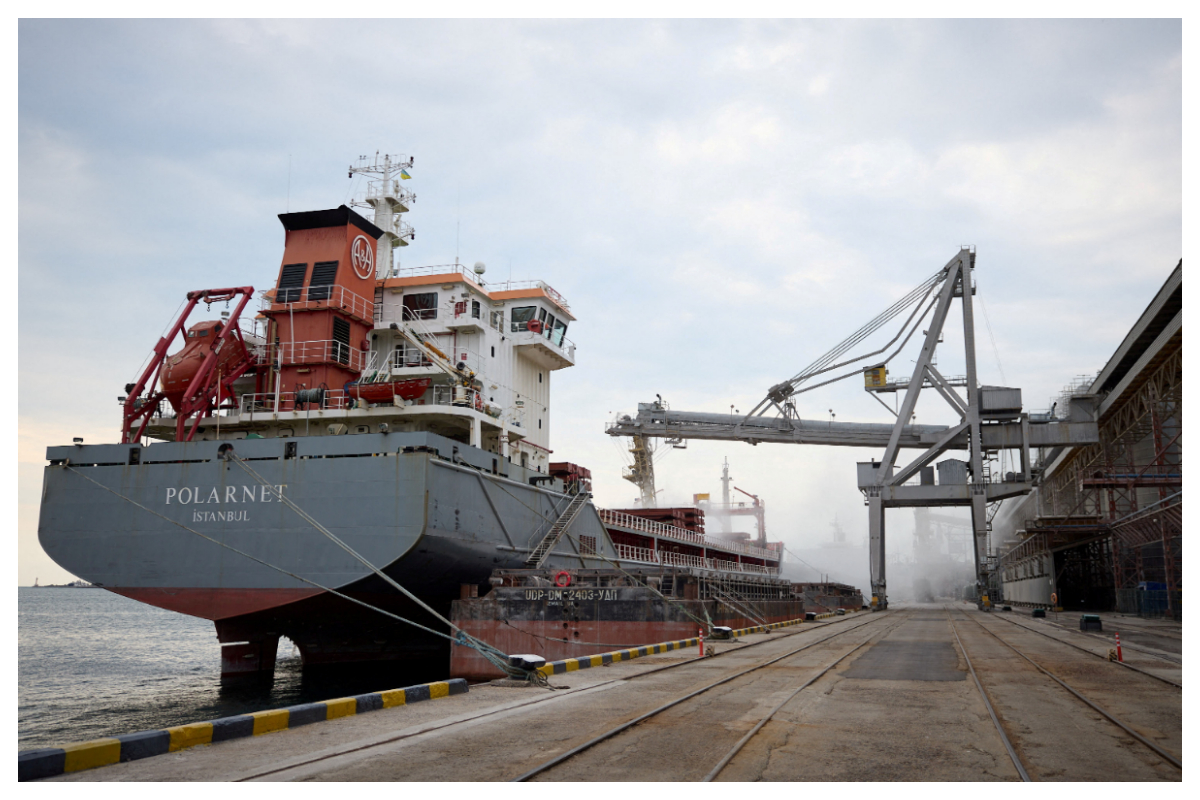- The ships are carrying more than 58,000 tonnes of maize.
- The ships’ departure comes after the first grain shipment left Ukraine earlier this week.
- Grain prices reached an all-time high in the weeks following Russia’s invasion, but some have already returned to pre-war levels.
Three more grain-laden ships have left Ukrainian ports and are on their way to Turkey for inspection, according to Turkey’s military ministry on Friday, demonstrating that a United Nations-backed plan to export Ukrainian grain trapped by Russia’s invasion is in the works.
The three ships are carrying more than 58,000 tonnes of maize. According to analysts, much of Ukraine’s grain exports are utilised as animal feed.
Ukraine is one of the world’s key breadbaskets, and the locked grain inventories were worsening a dramatic spike in food prices and heightening concerns of a global hunger crisis.
The ships’ departure comes after the first grain shipment since the beginning of the war left Ukraine earlier this week. It crossed the Black Sea as part of the historic wartime agreement, was inspected in Istanbul on Wednesday, and then proceeded to Lebanon.
The ships that left Ukraine on Friday were among more than a dozen bulk carriers and cargo ships that had been filled with grain and detained at Ukrainian ports since Russia’s incursion began in late February.
While tens of thousands of tonnes of wheat have now been carried out, it is still a fraction of the 20 million tonnes of grains that Ukraine claims are stranded in the country’s silos and ports and must be shipped out in order to create room for this year’s crop.
According to David Laborde, an agriculture and trade expert at the International Food Policy Research Institute in Washington, D.C., about 6 million tonnes of that trapped grain is wheat, and about half of it is for human use.
Grain prices reached an all-time high in the weeks following Russia’s invasion, but some have already returned to pre-war levels. Corn prices are nearly 70% higher than they were at the end of February 2020, before the epidemic, according to Jonathan Haines, senior analyst at data and analytics firm Gro Intelligence. Wheat prices are currently 63 percent higher than they were at the beginning of the invasion in February of this year.
One of three ships that left Ukrainian ports was the Turkish-flagged Polarnet, which was carrying 12,000 tonnes of corn and was bound for Karasu, Turkey. The Panama-flagged Navi Star transported 33,000 tonnes of maize from Odesa to Ireland. The Maltese-flagged Rojen set sail from Chornomorsk bound for the United Kingdom.
The United Nations said the joint coordination centre in charge of the deal had authorised the three ships as the operation expands, and that it had also inspected a ship bound for Ukraine.
The Fulmar S, which is registered in Barbados, was inspected in Istanbul and is bound for Ukraine’s Chornomorsk port.
The Joint Coordination Center, which oversees the agreement signed in Istanbul last month, is made up of officials from Ukraine, Russia, Turkey, and the United Nations.
The goal of the agreement is to establish secure Black Sea shipping corridors for the export of Ukraine’s desperately needed agricultural products. Inspectors inspect ships to ensure that outbound cargo ships only carry grain, fertiliser, or food and no other commodities, and that inbound ships do not carry weapons.
After this week’s first shipment, the United Nations stated that the humanitarian corridor needed to be revised “to allow for more efficient passage of ships while maintaining safety.”





















